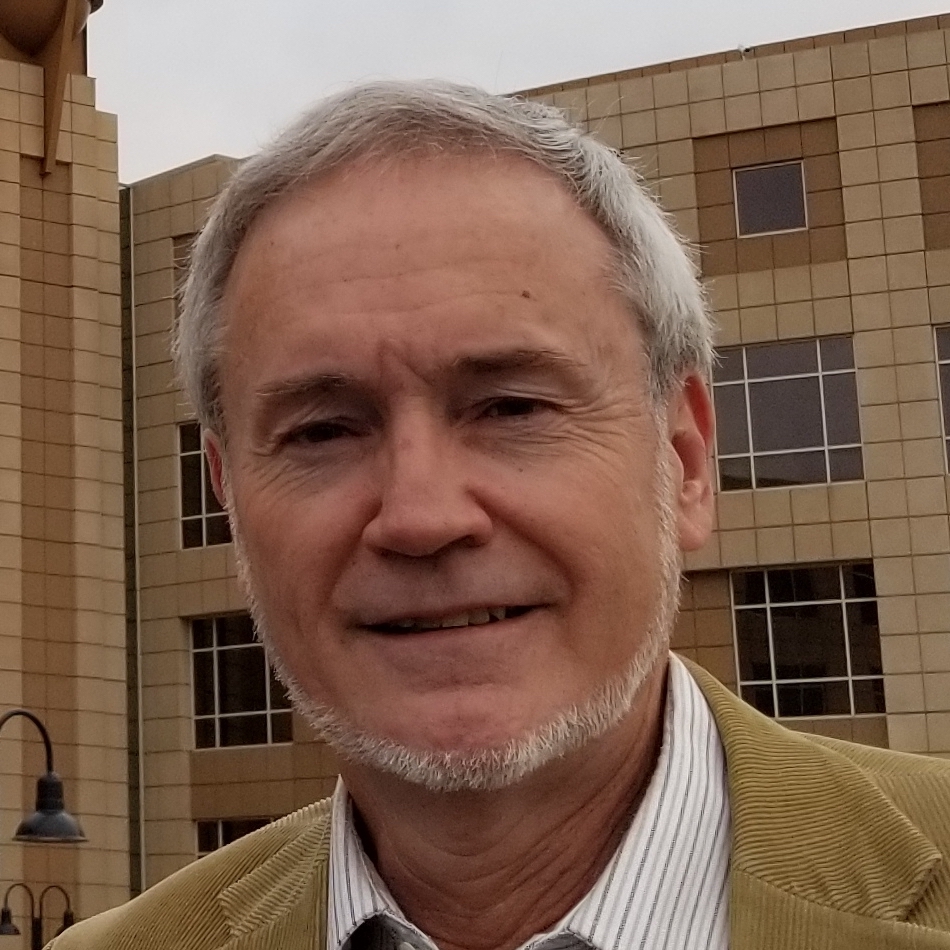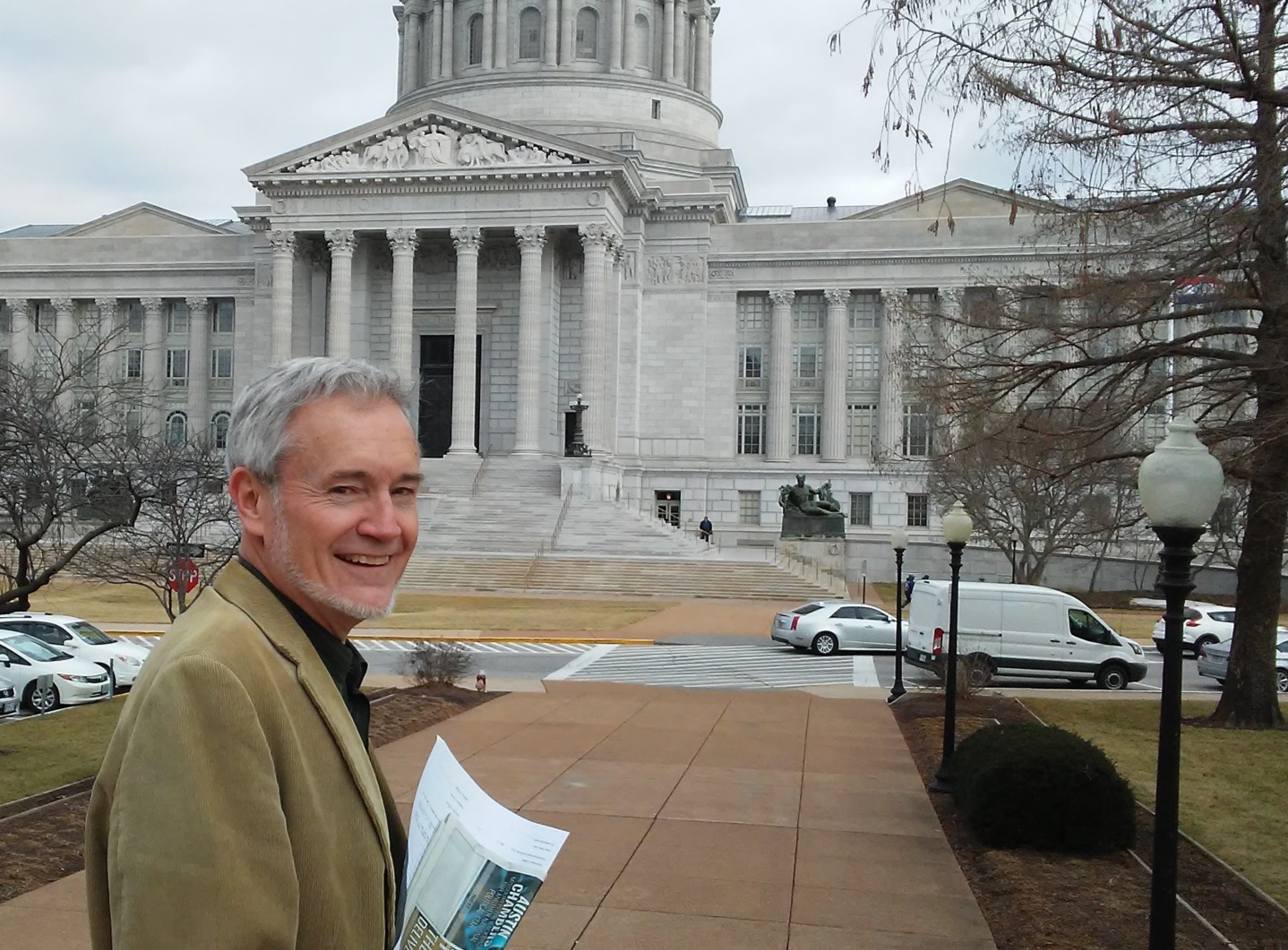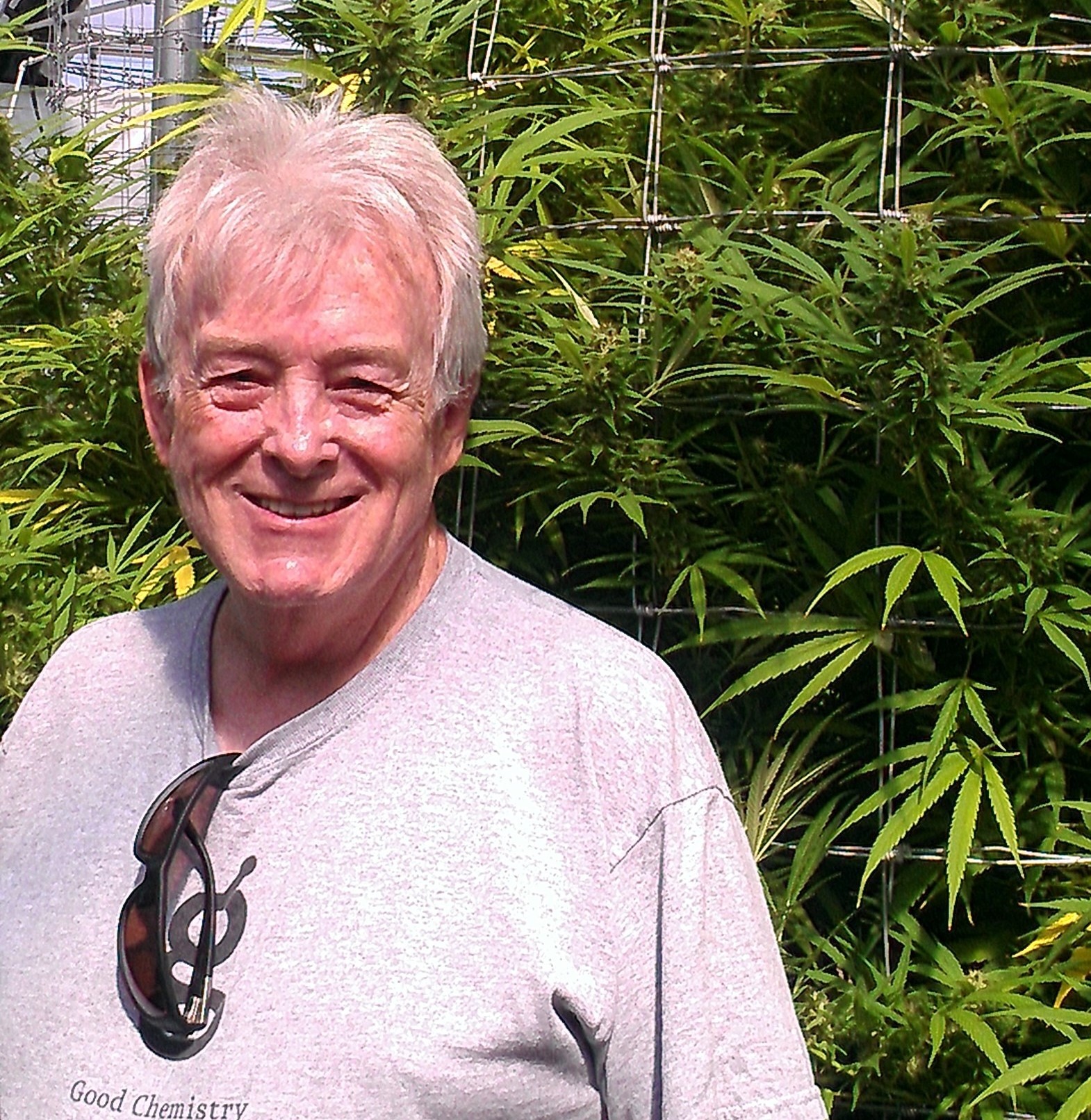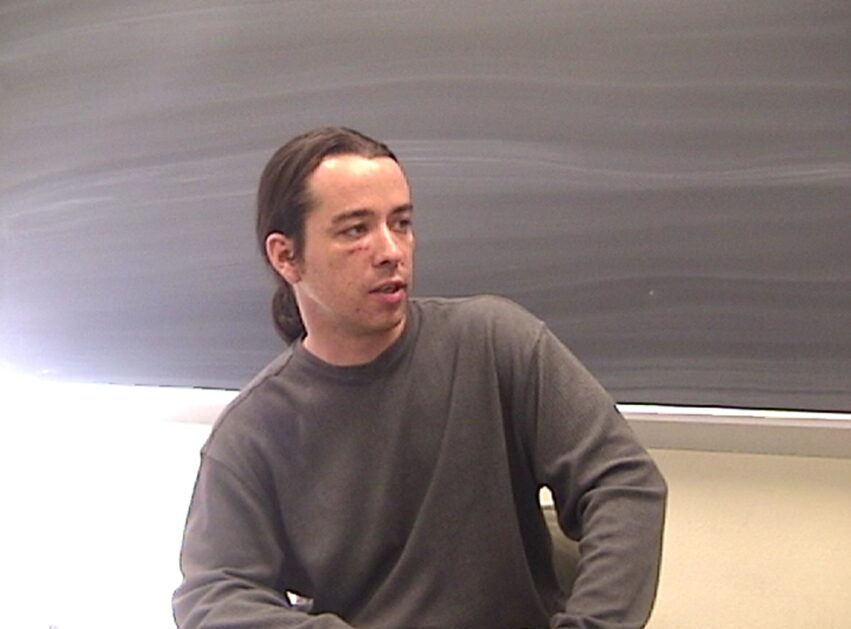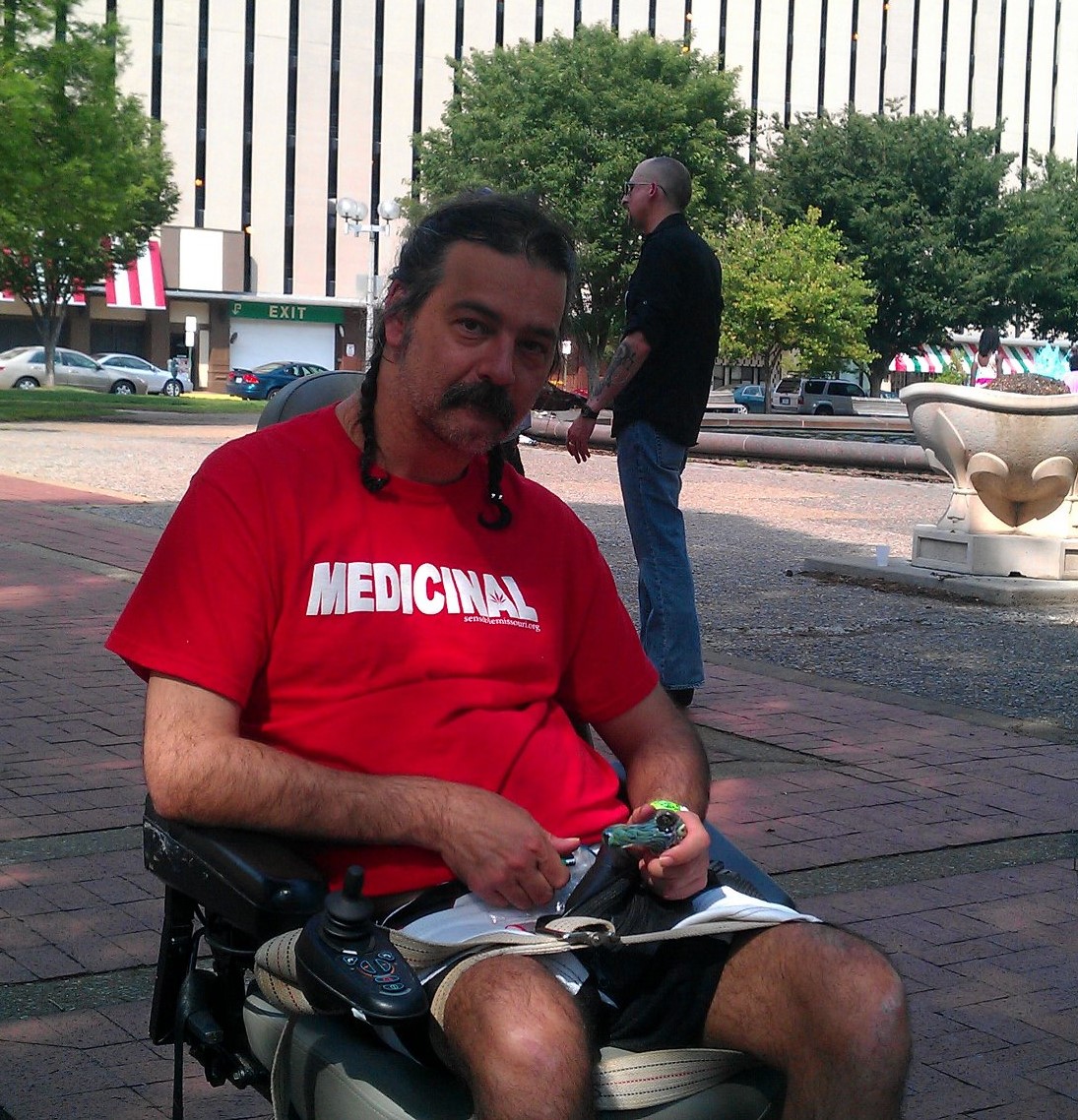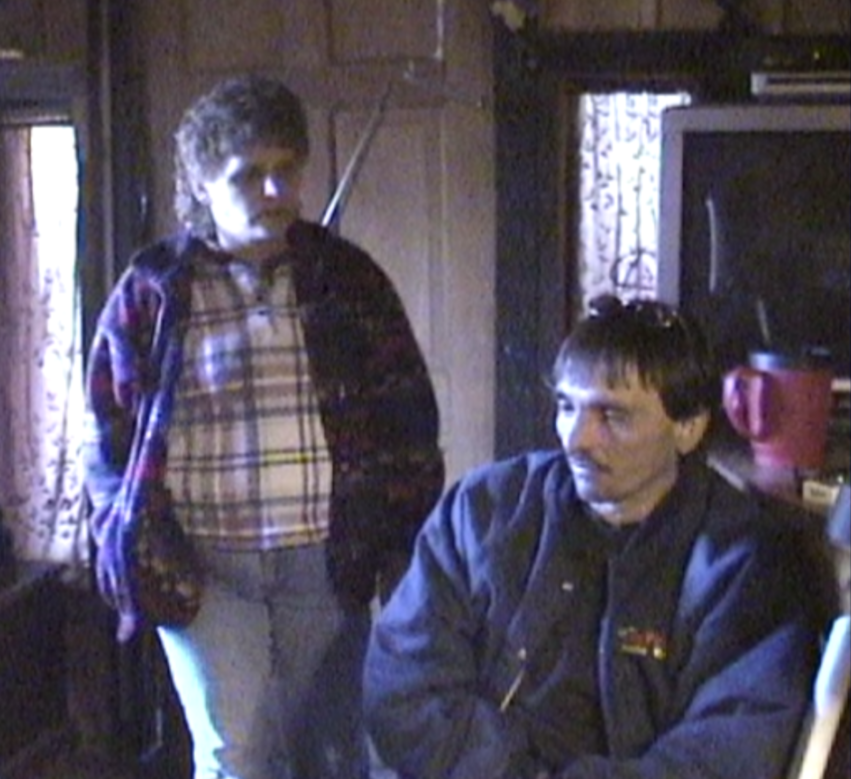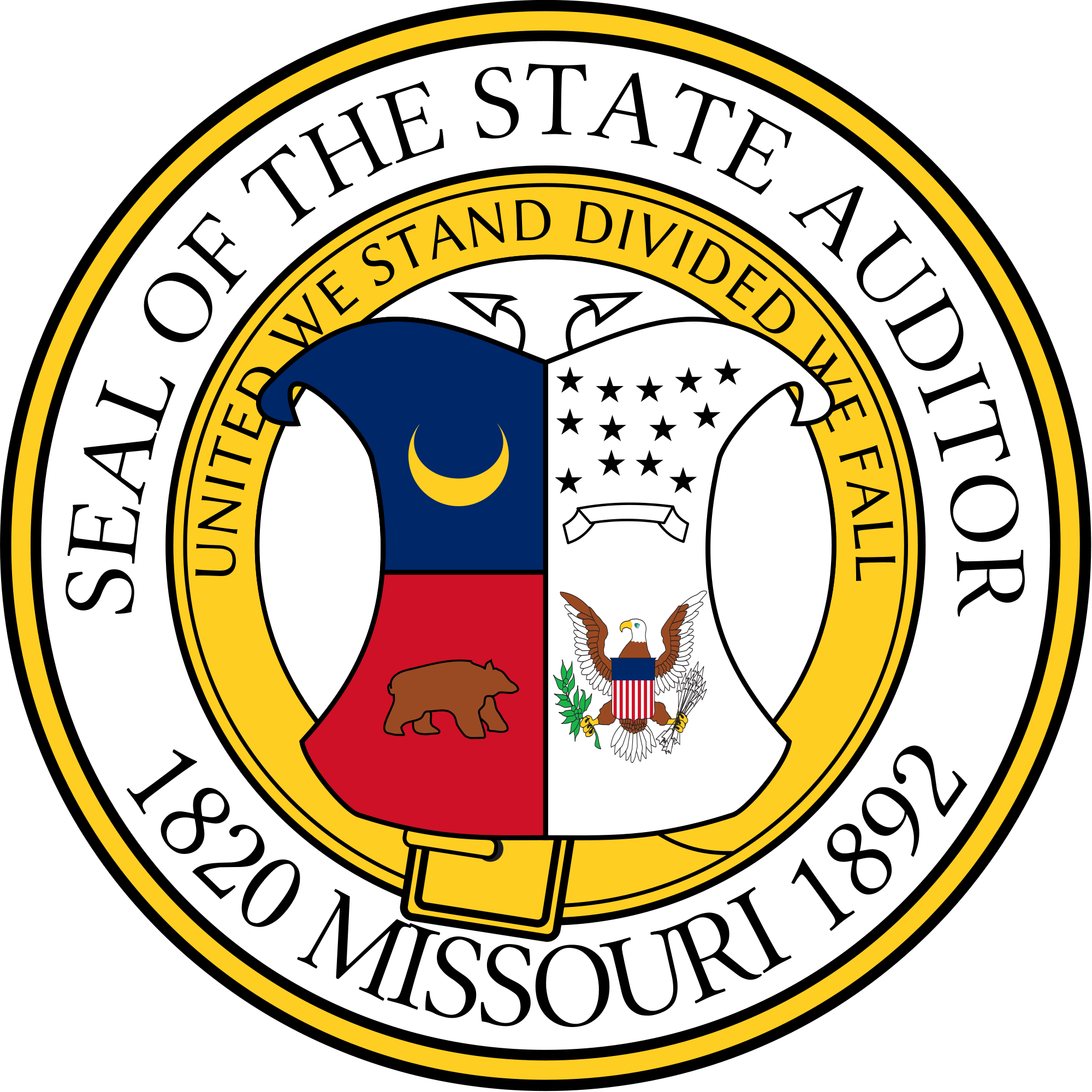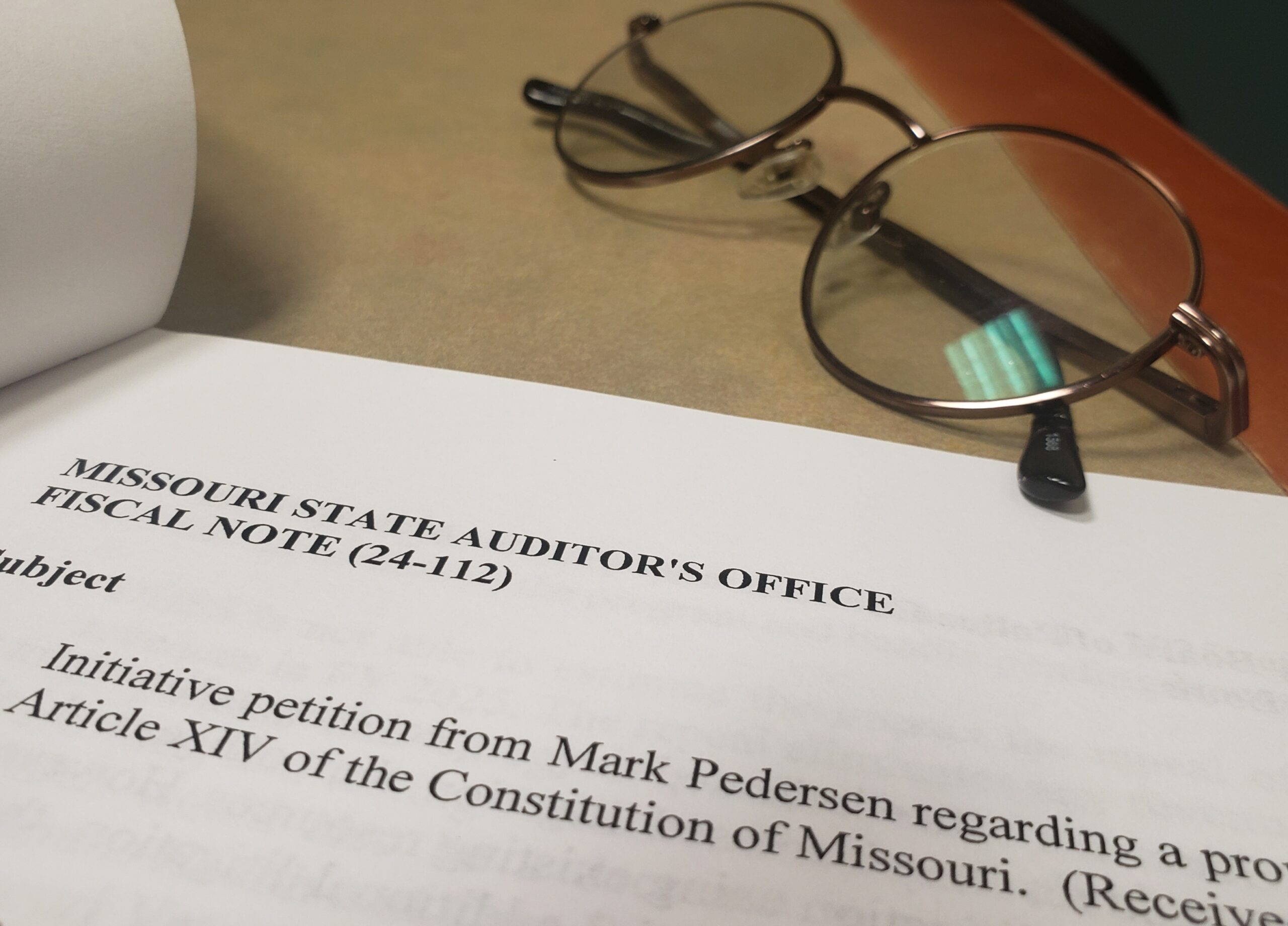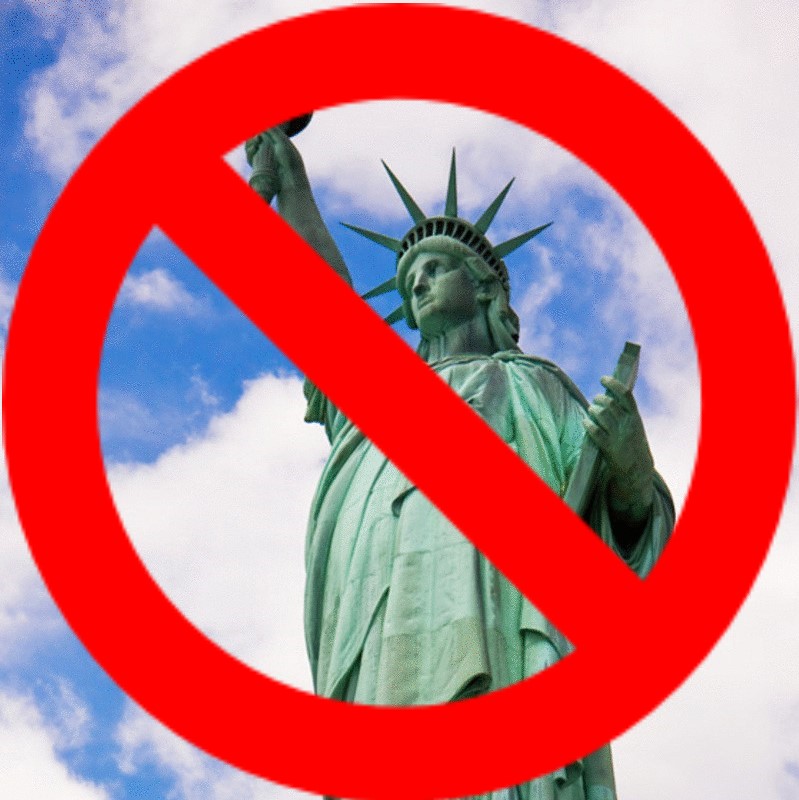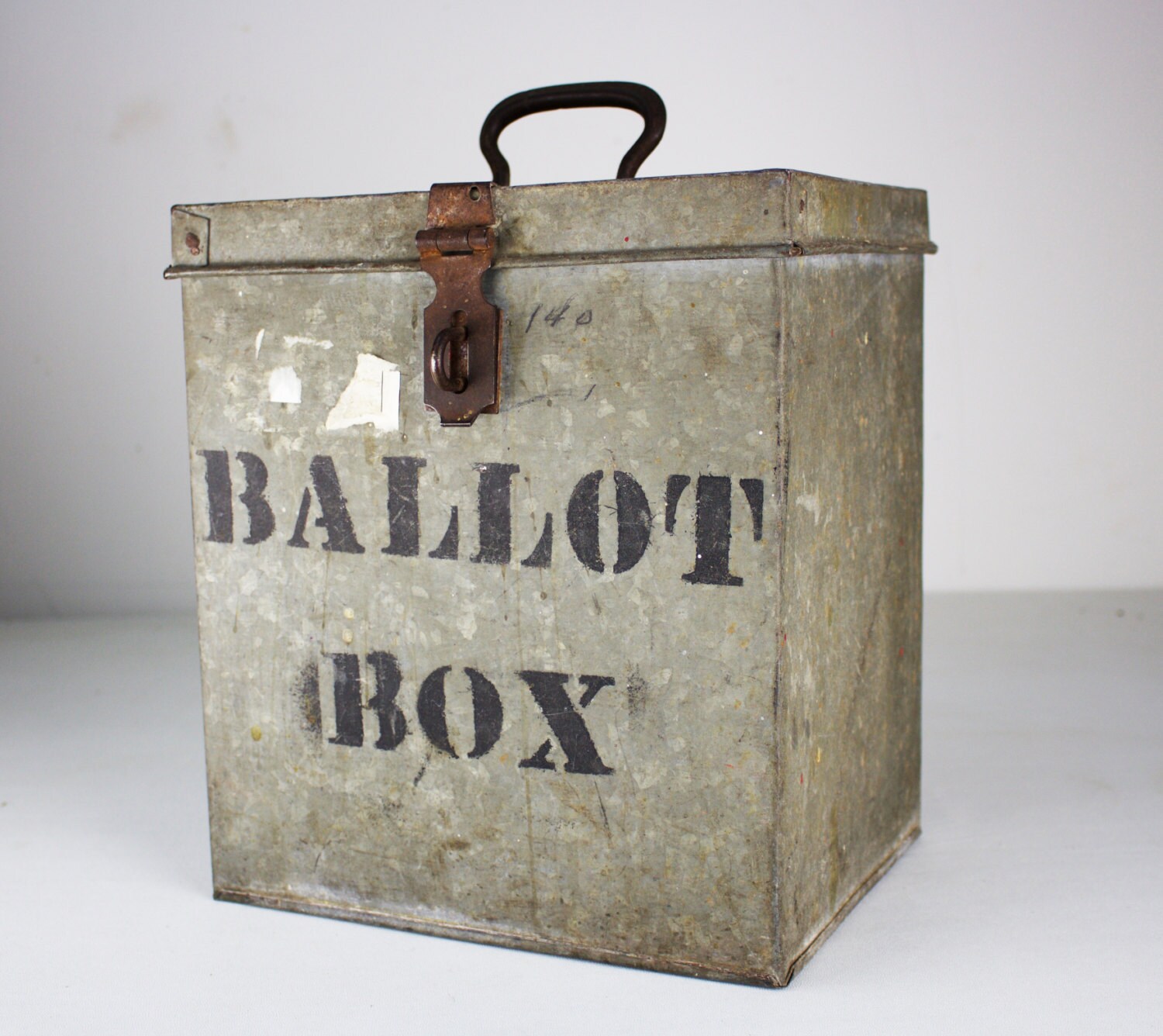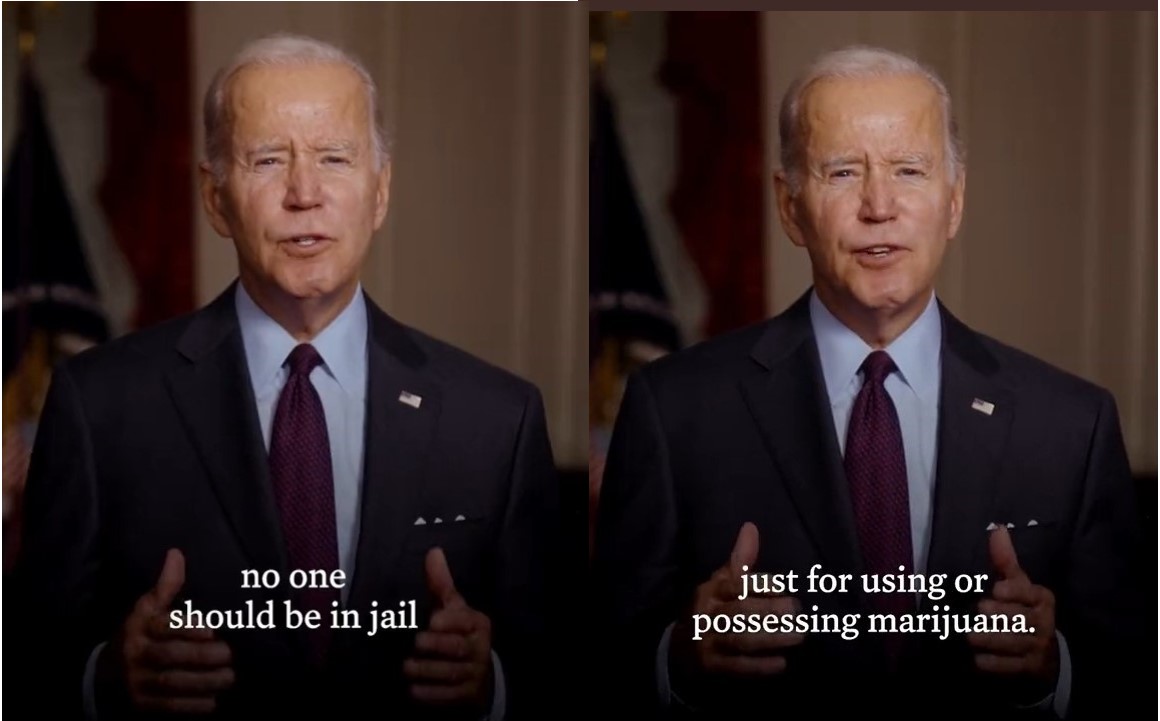My Line-by-Line Explanation for “Cannabis Restoration”
I have been down this road a few times now. With each new attempt, there are some very minor changes, but essentially, the initiative has not changed. For 2020, I put together initiatives for three other states, (Oklahoma, Arkansas and Nebraska. I would be happy to do so again upon request. There are structural changes in each to adapt to specific state guidelines, though the pertinent text of “Cannabis Restoration” remains the same.
It can be a bit confusing, viewing the actual Missouri initiative. As I had warned so many times through the years, amending a state constitution should never be attempted lightly, because once it’s done, it’s quite difficult to remove it. Stripping out the pages of senseless prohibitionist jargon was not only tedious, it was time consuming, requiring many hours (days – weeks) – of research, trial and error, and many consultations with attorneys, the Missouri Secretary of State’s office and the Missouri Attorney General’s office.
As a representative of the Missouri Attorney General’s office informed me, ”We’ve never encountered a case like this before, (…so much had been added to the state Constitution and now must be removed.”
Missouri law required that I include “Amendment 2” in it’s entirety in our petition. So, if you download and print the Cannabis Restoration petition, you will quickly find that it is eight pages, 8 1/2″ x 14″, double-sided.
I have omitted the Missouri “Amend. 2” portions from this “Line-by-Line” to limit confusion.
In addition, wherever you see “[state]”, this is a placeholder for the name of whatever specific state is utilizing the text of this ballot initiative.
I strongly recommend that you print the “Cannabis Restoration” ballot initiative and reflect on it as you carefully read through this “Line-by-Line”.
Throughout the rest of this document, my comments will be in BOLD ITALIC.
* * * * * * *
Section 1. Missouri Cannabis Restoration and Protection
1. Clarification as a substance.
Cannabis shall immediately be removed from the Missouri Revised Statutes list of controlled substances and shall no longer be listed among Missouri’s drug schedules. Cannabis shall hence forth be considered a food and not a controlled substance or a drug, by Missouri law, by the passage of this initiative.
[Definitions]
2. Definition of terms, as used in this Act: (a) “Controlled Substance List”, or “CSL” refers to Missouri’s list of controlled substances as pertains to Missouri Statutes.
The Controlled Substance List contains a wide range of substances that researchers for the pharmaceutical (and other chemical) industry have – and may continue to – draw from to develop new products. The National CSL was created in 1970. Monitored and appended by the Drug Enforcement Agency (DEA) and the Food and Drug Administration (FDA), it contains substances that are thought to have some capacity for harm and/or addiction. It is divided into five categories.
A Schedule I drug, like Cannabis, would be deemed the most harmful with “…no known medicinal value and greatest risk of potential dependency”.
Since the Federal Government has known that Cannabis could kill cancer since 1974, and is actually the “Assignee” for patents regarding Cannabinoid efficacy ( 2003, US 6,630,507 B1) – not to mention its documented lack of toxicity, it’s puzzling as to how it is still on the list at all.
Removing Cannabis from the Controlled Substance List
Removing cannabis from a state’s CSL changes everything. Literally. But only the complete removal from the state’s drug list can have the monumental effect required to bring about true legalization and an end to prohibition. Once that is accomplished, Cannabis would no longer fall under the guidelines of a controlled substance. It would, in fact, be food.
Heroin is a Schedule I drug. The very thought of a “budtender” dispensing something that is considered as dangerous as heroin screams hypocrisy. And yet, Cannabis remains a Schedule I drug (right along side heroin) in most states.
It is widely known that Cannabis is nontoxic. It has never belonged on this list.
What is even more troubling is that anything short of COMPLETE removal from the CSL would be far more catastrophic for those who need it, as well as for those who produce and sell it.
In the REAL world, physicians cannot handle, dispense or prescribe Schedule I drugs without a Schedule I license and access to a Schedule I pharmacy. Obtaining these can be quite difficult and would most certainly require an affiliation with a “teaching” university hospital that explores experimental medications. Such institutions are controlled and heavily funded by the pharmaceutical industry.
What’s more, handling of this “dangerous” substance would require special protective measures comparable to chemotherapy – if still abiding by Schedule I rules.
This is why in so called “medical” states, dispensaries are required to have special security measures. Imagine if a heroin dispensary were to open up down the street from your home or school. You would expect the special regulations and security. This is EXACTLY how lawmakers have seen Cannabis as they have manipulated the law.
Of course, as patients and dispensaries across the country have realized, many ancillary industries (like security and child-protective packaging companies) have benefited tremendously from this very unusual type of prohibition, at the unnecessary expense of the consumer.
The REAL Reason
What is deliberately NOT discussed is the REAL reason why the current dispensary industry would want to KEEP Cannabis as a Schedule I drug. As long as it remains there, it is in a very unique limbo, not experienced by ANY other controlled substance. Cannabis is the ONLY “drug” that is allowed to be distributed by non-licensed (and non-medical) retailers. Moving Cannabis to any other Schedule – 2 through 5 – would take it away from them and place it entirely under the pharmaceutical industry’s control. Physician prescriptions (not recommendations, as we see currently with Cannabis law) would be required. As well, only pharmacies would be allowed to dispense it.
If Cannabis were to be removed ENTIRELY from the CSL, as is dictated by the “Cannabis Restoration and Protection”, it would no longer be considered a “drug”, but instead, a food. Cannabis, in its many forms, could then be sold in any store that can sell food. Cannabis would be legal to grow by farmers and individuals alike without any special control.
In light of recent attempts on a Federal level to remove Cannabis from the CSL (i.e. the very dangerous, MORE Act), I would caution everyone to read the bills closely. All “national” reform that I have seen so far, though stating that they would remove Cannabis from the national Controlled substance list, still mandated special restrictions on Cannabis, or opened the door for other legislators to do so – that would impose their own form of prohibition on Cannabis.
Once Cannabis is removed from the CSL, it would essentially be a food. We must be careful to NEVER allow lawmakers to impose prohibitionist restrictions and penalties on the production and consumption of ANY food.
(b) “Cannabis” and “Cannabis hemp” refer to the Cannabis, marihuana, marijuana, Cannabis sativa, Cannabis sativa L., Cannabis Americana, Cannabis Gigantea, Cannabis indica, Cannabis ruderalis, or any variety of Cannabis, including any derivative, concentrate, extract, flower, leaf, particle, preparation, resin, root, salt, seed, stalk, stem, or any product thereof.
So Many Names
Cannabis is known by many names, but in truth, it is divided into only three sub-species. Cannabis sativa, Cannabis Indica and Cannabis ruderalis.
“Hempsters”, activists and profiteers have worked quite diligently to distance their so called “non-psychoactive” forms of Cannabis from public opinion by manipulating the vernacular, creating new definitions for old Cannabis terms and slang, (marijuana, hemp, CBD, etc.).
In reality, cultivators have for decades interbred all three subspecies. Age-old therapeutic Ruderalis is a good example. It has been bred with medicinal sativa and indica strains for years to glean a shorter growth cycle ( “auto-flowering”) and high CBD attributes.
Whenever you hear anyone refer to “CBD”, they are more than likely talking about one of many phytocannabinoids found particularly in the “sativa” subspecies. That’s right, “CBD” is not some strange new plant. It is derived from Sativa and/or its crossing with Ruderalis.
In fact, CBD can be found in all three subspecies. Cannabinoids are found within the Cannabis plant for the same reason that Endocannabinoids are found within all mammals. For the health and well-being of the organism that produces them. Homeostasis, or balance is the purpose of these systems.
The very fact that all three sub-species have and continue to be bred together to produce more robust plants only illustrates the fact that Cannabis is, in effect,
ONE “family” . . . of great variation.
So what is “hemp”, really?
Contrary to popular thought, hemp is NOT another name for “CBD”. In fact, all things Cannabis were referred to as “hemp” throughout much of its history. The “modern” definition was derived from the term “industrial hemp”, which refers to Cannabis that has been cultivated specifically for industrial purposes; for the manufacturing of building supplies, plastics, soil remediation, etc.
With the emergence of the “CBD” craze, and it’s association with negligible levels of “THC”, Hempsters dropped the word “industrial” from “industrial hemp” so that they could embrace the word “hemp” for home use, nutrition, etc., strengthening “hemp’s” credibility and importance.
Despite the many names it goes by, Cannabis is truly one plant.
Here in the states, Sativas are what most of us have been exposed to since we were children. Indicas and Ruderalis strains have over the course of their history remained largely regional until their more recent reemergence as medicine.
As I have already related, “industrial hemp” is derived from Sativa., Stretching back to colonial days when the industry was unfettered. Cannabis hemp has been an intricately important crop throughout the history of man. Unfortunately, existing draconian law, particularly the ridiculous “0.3% THC” nonsense, shackles what it could truly be for Missouri and our nation.
In a truly LEGAL Cannabis market, with all that is Cannabis, in its many variations, it is conceivable to imagine a 500 billion dollar per year industry. Of course, if we were talking about true Cannabis freedom, involving our whole nation… well that figure would be far greater and would indeed challenge your imagination.
Beyond its importance as a nutraceutical and health supplement, Cannabis would revolutionize the production of fuels, plastics and building supplies. Because of its hardiness, sheer size and volume – virtually overnight, our world would have a new and renewable source for all things currently produced from corn, soy, trees and petroleum sources.
Imagine THAT, world….
(c) “Medical Cannabis” refers to Cannabis used to prevent or to treat a medical condition.
(d) “Personal use” refers to the personal use or consumption of Cannabis.
The characteristics of “medical” versus “personal” use are a bit cloudy. In fact, one would think that “medical” would mean more potent, higher grade medicinal quality herb. Clean, safe, potent medicine would obviously be what one would expect to treat serious illness, far and above what one would use recreationally. Unfortunately, that is not necessarily the truth in today’s world.
In every state with the “dispensary model”, dispensaries were “legalized” in order to provide therapeutic product for the sick and dying who could not find relief from any other legal product. Unfortunately, in every one of those states, virtually every dispensary – from the get-go – carried largely recreational “smoked” products and candied “edibles” in order to encourage volume sales. The pursuit of sales has from the beginning eclipsed all things medical.
It became evident, almost immediately to the educated that our miraculous treatment had not only been hijacked by profiteers seeking to cash in on patients with chronic health issues, but in a far truer sense, take advantage of a recreational market under the guise of a medical program. Just a covert version of the old black-market.
“Medical” should ALWAYS mean the safest, most potent products, knowing always that those who depend on Cannabis to treat their debilitating illness require it to maintain some semblance of quality of life. They don’t “use” occasionally. They use continually.
(e) “Cannabis accessories” means any equipment, products, or materials of any kind that are used, intended for use, or designed for use in planting, propagating, cultivating, growing, harvesting, manufacturing, compounding, converting, producing, processing, preparing, testing, analyzing, packaging, repackaging, storing, or containing Cannabis, or for ingesting, inhaling, vaporizing, smoking or otherwise introducing Cannabis into and/or onto the human body.
The tools for producing and consuming Cannabis must no longer be considered “contraband” or “tools” for an arrest.
(f) “Establishment” refers to a Cannabis cultivation facility, a Cannabis testing facility, a Cannabis product manufacturing facility, or a retail store, Cannabis store or other entity that cultivates, prepares, manufactures, packages, transports or sells Cannabis, Cannabis products and/or Cannabis accessories.
Self-explanatory…
[Personal and Commercial]
3. The following acts are not unlawful and shall not be an offense under [state] law:
(a) Possession and consumption of Cannabis for personal or medical use.
(b) Cultivating Cannabis for personal or medical use.
These two are protections for those who possess and/or cultivate Cannabis for their personal use and consumption. These lines are sufficient to provide safe, legal access for most – for personal, and/or medical use.
(c) Cultivation, harvesting, processing, manufacturing, packaging, distributing, transferring, displaying or possessing Cannabis, Cannabis accessories, and Cannabis products for commercial purposes, provided the person has current applicable licensing to operate a commercial establishment. No special licensing will be required beyond that which is applicable for the cultivating, harvesting, processing, manufacturing, packaging, distribution, transferal, display or possession of any non-toxic food or food product.
(d) Providing Cannabis, Cannabis accessories, and Cannabis products for sale to consumers.
(e) Leasing or otherwise allowing the use of property owned, occupied or controlled by any person, corporation or other entity for any of the activities conducted lawfully in accordance with paragraphs (a) through (d) of this subsection.
Anyone Can Cultivate
These three are protections – particularly, but not exclusively, for those involved in the commercial production and sale of Cannabis. Truthfully, ANYONE under this law would have the right to cultivate Cannabis and produce any Cannabis product, limited only by their own abilities and their imagination.
(f) No one shall be denied housing solely based on their use of Cannabis.
(g) No one shall be denied employment solely based on their use of Cannabis.
(h) The use and/or possession of Cannabis shall in no way impede one’s legal right to possess a firearm.
NO Cannabis law carries any value unless it first provides basic protection for everyone who uses Cannabis. No one should risk losing their housing, employment, or even their ability to protect their home because of their use of Cannabis. Once we truly understand that Cannabis is food, we will all realize just how unconscionable the laws we have lived by and suffered under truly are.
[Medical]
4. Medical Cannabis shall be available to patients without taxation who have a physician’s recommendation for its use.
Those who deal with chronic and terminal illness are, more than likely, already dealing with financial hardship. Imposing ANY taxation is unconscionable and counter-productive. No government should prosper from the misfortune of illness.
Its understandable that an ever growing number of states are rapidly growing accustomed to the exorbitant taxation of Cannabis, but its important to realize, in a truly legal market, sales tax alone would amount to billions.
Every American family has been beset by chronic and terminal illness. Our most vulnerable should always be first to the table and should never be punished for pursuing a life free from suffering..
Absolutely No “Excise Tax”
Most state “marijuana” programs – medical and recreational – impose an “excise tax”. An “excise tax” is nothing more than a “sin tax”.
A “sin tax” is imposed as a deterrent to the use of a substance if it is determined to have a negative impact on individual health and the civility of the community (i.e. a tool in the production of a “sin”).
The reputation of Cannabis and its users have been vilified, purely based on its past association with dangerous pharmaceutical drugs that were also used recreationally. In its truest sense, an act of “associated-bigotry”.
It’s important to note that, in the 1970’s, then President Nixon was directly responsible for Cannabis being placed on the CSL. He did so to persecute those protesting the Vietnam War. It has remained there as a convenient tool for entrapment and persecution and, of course, civil forfeiture.
As I have stated so many times, Cannabis IS non-toxic – there by, not a sin to consume. If it’s use is not a “sin”, it is wrong to penalize those who use it.
(a) All patients engaged in Cannabis therapy shall be afforded the same rights and privileges afforded to any patient treated through conventional therapeutic means, whether or not under the care of a physician.
For a hundred years we have consumed toxic pharmaceuticals with often marginal at best results in treating our chronic, and most specifically terminal illnesses. Cannabis has overwhelmingly proven itself as a viable treatment for some of the worst of illnesses, as an adjunct, and as a principle course of treatment. How can we not treat those who benefit from its use with, at the very least, the same respect as those who seek conventional treatments?
(b) Licensed physicians shall not be penalized for, nor restricted from recommending and/or providing Cannabis for medical purposes to any person under their care.
(c) Veterinarians shall not be penalized nor restricted from recommending and/or providing Cannabis for medical purposes for any creature under their care.
Those who care for us and our pets should be allowed to utilize WHATEVER treatment best presents a safe and most effective outcome, without biase.
(d) Any individual who is a Cannabis patient in another state shall be granted the same rights and privileges as a legal [state] Cannabis patient.
It goes without saying that illness spans state lines. Denying anyone their medication based on geography is beyond absurd. Could you imagine obligating a diabetic on a business trip or vacation to have to return home to utilize their insulin?
Absurd? Many state medical Cannabis programs insist that patients have to sign with one specific dispensary and only purchase products from them. What that means is if a patient is hundreds of miles away in another part of the state, he or she must do without or return to that specific dispensary for a refill.
There is an ever growing number of children and adults who suffer from epilepsy, for whom, Cannabis concentrates are their primary treatment. Once we realize that Cannabis is vital medicine, we must soberly address issues that violate the civil liberties of those who are dependent on it.
(e) Medical care, including organ transplants, shall not be restricted in any way based on a person’s use of Cannabis.
Why would any government, medical agency or institution deny rights or conventional treatment, solely based on one’s use of a nontoxic substance, particularly one with such tremendous medical benefit? Sadly, that has been the case in so called “legal states” like Colorado and California. I have been a victim of it, many times.
Bad and/or incomplete law produces injustices like this where bigotries prevail. Things like this can take the lives of our most vulnerable.
Where Can You Grow?
[Zoning]
5. Cannabis farmers, manufacturers, processors, and distributors shall not be subject to any special zoning requirement, licensing fee that is excessive, discriminatory, prohibitive, or in any way contrary to that which is relative to any other commercial or agricultural farmer, manufacturer, processor or distributor.
All you need to do is go to just about any state with a Cannabis program and you will witness the importance of this line. States like Colorado allowed communities to opt out of the legal use of Cannabis, even prohibiting dispensaries and cultivation of any kind. That might be alright for a harmful, dangerous drug, but not cannabis.
This segment strips away the many bigoted laws that have and continue to be drafted that would greatly limit the sensible use and production of Cannabis. Being able to cultivate what heals and nourishes our bodies is a basic human right. Once Cannabis is deemed the same as any other agricultural crop, to create any ordinance that specifically singles out and penalizes the Cannabis producer or distributor would be unjust and discriminatory.
[Law Enforcement and the Courts.]
6. [state] law enforcement and its courts shall protect Cannabis users and their property without discrimination, and with every bit the effort afforded to every citizen of [state] and our nation.
Personal biases and bigotries have no place in law enforcement – or government of any kind, for that matter. Those who are sworn to protect us must do so without prejudice.
Cannabis and Driving
(a) The use and/or possession of Cannabis shall not be grounds for issuing a “Driving under the influence” (DUI) stop, charge, arrest or fine(s) when operating or a passenger of a motor vehicle. Stops, charges, fines and arrests shall be the product of visible and/or previously proven non-Cannabis infractions of [state] law.
Because of widespread ignorance regarding this issue, as well as manipulative efforts on the part of those involved politically, I must address this line in detail. I’m sure my adversaries will want to be heard regarding this one.
Cannabinoid metabolites remain in a person’s system for days, even weeks after consumption. The reason is because Cannabis is TRULY food. Our livers determine it as such and allow (plant-based) phytocannabinoids to pass through the same as any food.
But further, because of “THC’s” close similarity to “anandamide”, which we produce endogenously, our bodies interpret it the same and store away what is not used immediately in our fat cells. When it is needed, it makes its way back into our bloodstream where it can be dispatched to where it is required. That’s why it shows up in our blood, as well as our urine (where surplus nutrients are flushed from the body). Depending on personal metabolism and exertion, it can appear in a drug test, days, even weeks after consumption.
At that point, obviously ANY euphoria had long past subsided. So what is the “drug test” really for?
If DUI laws were enforced in Colorado, conservably 20% of the population would be denied the right to drive. Obviously, this is a highly inaccurate way of testing whether or not one were physically capable of operating a motor vehicle. In reality, it is just another means of entrapment.
So why do some states insist on imposing cannabis DUI laws and conducting so called “marijuana sobriety checkpoints”? Apparently to punish the general population, particularly the Cannabis patient, purely for opportunistic and defiantly bigoted reasons.
Why else would law enforcement stop drivers who “look like a pot smoker”, even if they are not driving erratically? That is “profiling”, and a direct violation of civil rights. Punishments should be applicable to an ACTUAL CRIME, not personal philosophies or prejudice.
Protection here ensures that bigotry will not strip the personal rights of our driving community without due cause.
What About the Feds
(b) No [state] law enforcement personnel or state funds shall be used to assist or aid in the enforcement of federal Cannabis laws involving acts which are no longer illegal in the State of [state] under this amendment.
The DEA relies on the cooperation of local law enforcement to enforce their dictates. Removing their funding and cooperation from our men and women in blue ensures that the wishes of the state’s voting public will not be violated.
Civil Forfeiture and Cannabis
(c) Asset or Civil Forfeiture shall no longer be used in the state of [state] through association with Cannabis, Cannabis cultivation, it’s use and/or possession, in any way.
Civil Forfeiture accounts for a thirteen billion dollar a year windfall for law enforcement across our country. As all too many of us have realized personally, law enforcement can enter our homes, take our personal things, our car(s), boat, motorcycle, empty our bank accounts, even seize our home – without ever charging us with a crime.
Civil Forfeiture laws were created as a (questionable) means of combating organized crime. Basically, if you take away one’s assets, they lose the financial ability to present a defense, making it much easier to prosecute. Unfortunately, the process has suffered widespread abuse, as law enforcement has now grown accustomed to the revenue, which they use to fund everything from tanks and body armor to private trips and elaborate parties.
Amnesty for Cannabis Crimes
(d) Upon the passage of this Act, all persons incarcerated or under supervision of the [state] Board of Probation and Parole for non-violent, Cannabis-only offenses, which are no longer illegal in the State of [state] under this Act, shall be immediately released.
(e) Within 60 days of the passage of this Act, a legal document shall be developed and made available to the public ordering the immediate destruction of all Cannabis-related non-violent civil and criminal records in [state] and for any offense covered by this amendment which is no longer illegal in the State of [state] under this Act. This document shall be distributed to all pertinent parties throughout the state.
(f) Within 60 days, [state]’s Courts shall order the immediate expungement of civil and criminal records pertaining to all non-violent Cannabis only offenses which are no longer illegal in the State of [state] under this Act.
This should be self-explanatory. Its only right that we don’t forget those who suffered under prohibition; those who lost so much to satisfy the greed and bigotry of a few.
I have been including this in my initiatives since 2011 and, at least in part, it has been adopted into initiatives for a number of states throughout the country. Unfortunately, most have interjected a number of hurtles that were meant to make this process much more difficult, both for the individual and the state.
I truly don’t understand why so called “advocates” would insist on further litigation except, of course, for those attorneys who foresee a considerable loss in revenue without future Cannabis arrests and appeals.
Again…Regarding the Feds
[Regarding Federal Law]
7. Pursuant to the Ninth and Tenth Amendments to the Constitution of the United States, the people of [state] hereby repudiate and challenge federal Cannabis prohibitions that conflict with this Act.
It is our legal right as an American to challenge the Federal Government on ANY issue that we find to be unjust or threatens our health and/or safety.
[Existing Local, State and Federal Law]
8. All provisions of this section shall supersede conflicting city, county, state or federal statutory, local charter, ordinance, or resolution.
As we have witnessed in Colorado and California specifically, but other states as well, allowing some communities to “opt-out” of legalization creates confusion and rewards bigotry. It is often used as a divisive means of retribution and ALWAYS infringes on the civil rights of the individual, particularly those who so desperately need this treatment to preserve their lives.
[Implementation]
9. The dictates of this Initiative, unless otherwise indicated by this initiative, shall be implemented no later than January 31st, 2023.
The simplicity of this bill alleviates the expense of implementing costly support programs. Draconian laws replaced with common sense. “Parental guidance” and “Personal Accountability” saves money and champions liberty.
A month and a half is enough time to let lose the shackles of prohibition.
* * * * * * *
Penalties
What is missing? Penalties. No fines. No prison time. Because under this law, there would be no crimes to punish. Penalties that do not reflect an actual crime are “methods of control”. They are not products of “Democratic thought”.
Age of access?
This is the most controversial part of my initiative – even though it is not even mentioned at all anywhere in the initiative. I just omitted it. There is no mandatory minimum age for access.
Why? First, and perhaps most importantly, Cannabis is NONTOXIC. That should be a more than sufficient for an explanation.
Just the fact that Cannabis can be euphoric is not a reason to deny it to those who need it, or those who want it, for that matter. Cannabis is food. There are other foods that can induce euphoria.
Who has the right to deny healthy, nontoxic food to anyone? That could be understood with toxins like alcohol or prescription drugs. But not Cannabis.
The liver sees alcohol and prescription drugs as poison. Rightfully so, because they are. In large doses, the liver swells and strains to convert these toxins to non-volatile substances. Poison that makes its way to the brain causes inflammation and in turn, cell death.
Cannabis, however, passes through the liver unobstructed because the liver sees it as food – because that is truly what it is. What is not needed is stored in our fat cells. When we exert or injure ourselves, the phytocannabinoids are released, much as our endogenous counterparts, into our blood stream and dispatched to where they can do their job.
If we are active, Cannabinoids pass quickly through our bodies. If we are complacent, they may linger. That’s why Cannabinoids can still appears in our blood and urine long after its consumption.
Its nourishment for our bodies – as medicine, and as food. That’s why our bodies treat Cannabis the way it does – unlike toxins, like alcohol and prescription drugs.
Cannabis is a neuroprotectant. So it actually PROTECTS the brain.
According to the 2003 patent on cannabinoid process,
“Cannabis is effective in preventing stroke and in treating those who have experienced stroke.”
Science… and the pharmaceutical industry have known this for quite some time now.
Cannabis does not cause brain damage in adults or children. That’s a physical impossibility. Reports that suggested that it did were proven to be propaganda spread by our own government. The fact that most states with a medical Cannabis program still print these untruths on Cannabis bags and packaging further reveals how state governments bow to special interests over the health and just treatment of their constituents.
Cannabis, particularly the cannabinoid THC, actually opens endocannabinoid receptors and stimulates the production of endocannabinoids, lipid messengers responsible for regulating virtually every system in the body.
Cannabis and Children
I have worked with the parents of children as young as eight months old. Every child that has been brought to me has been quite ill. Most were terminal. Conventional medicine could not help them and was, in fact, in the process of killing them.
I have had children brought to me in full seizure. My colleague and I stopped one infant boy’s seizure in three minutes… in my living room. No prescription drug could do that. That’s why they brought her to us.
This isn’t supposition or some extrapolation – this is real life!
In spite of the fact that cannabis is NONTOXIC, and actually nourishment for the human body, there are those who do not want their children having access.
What do I say to them?
Throughout the course of any given day, our children are exposed to a plethora of toxic, even highly lethal toxins. Most households do not lock up cleaning supplies, let alone medicine or liquor cabinets. Prescriptions are often left out on night stands. Toxic chemicals are usually stored together under the sink or in unlocked cabinets, often without child-proof lids. Yet, most children don’t ingest these poisons, even though they are easily accessible. Why?
Two things…
Parental guidance – when we are children…
and
Personal Accountability – when we are grown.
The Bible states, and I paraphrase,
“Train up your child in the way he (or she) should go and when he is old, he will not depart from it.”
If you find any behavior in your children that you determine to be unacceptable, it is YOUR duty as a parent to correct it.
Law is not meant to be your child’s nanny. You cannot legislate common sense. You cannot legislate good behavior. Instilling these thing in your child is your job.
In summary –
This initiative is about giving our citizenry a choice. It is the accumulation of thousands of conversations that I have had with patients and advocates all over America. My question to them was, “What do you desire regarding cannabis reform” – not what you think others would accept… or what a neighbor or a politician, or your pastor, for that matter, told you to think.
“What do you truly want?”
Overwhelmingly, I was told
“free and open access…no more prohibition.”
I believe the people should have a choice. That’s what the Direct Initiative process is all about. The voting public deciding what is best for them – not law enforcement and most certainly not profiteering cannabis entrepreneurs.
Denying a patient access to the medication they require is the REAL crime – plain and simple. It’s time that freedom and liberty ring true in our nation. Only We, the People can ensure that our needs – and wishes are preserved for, not only ourselves but future generations to come.
There will most certainly be some who will seek to “selectively” plagiarize (“cherry-pick”) my initiative – as we have already seen with initiatives like “Amendment 2. Some see using only select portions of “Cannabis Restoration” as, perhaps, an act of compromise.
It’s unfortunate that all to many within the Cannabis community cannot imagine a world that can separate itself from it’s cognitive dissidence. A world that takes PERSONAL responsibility for their children and themselves without the need for government intervention.
Please understand, there is a reason why I wrote this initiative the way that I did. Years have honed this writing to make it the single most effective way to bring complete legalization. I have researched and written Cannabis reform for over a decade. I don’t enter into this lightly. Each and every word has been written soberly and sincerely with the people of this nation at its focus… and with their (your) liberty and health, in mind.
This initiative will TRULY legalize Cannabis.
Cannabis is nontoxic. Cannabis is food. Cannabis is the single most important medicine of the 21st century.
* * * * * * *
Missouri’s first REAL Cannabis legalization initiative:
Missouri Cannabis Restoration and Protection 2022-23
